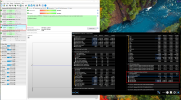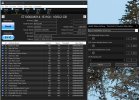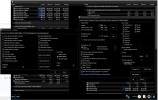You are using an out of date browser. It may not display this or other websites correctly.
You should upgrade or use an alternative browser.
You should upgrade or use an alternative browser.
Which drive health reading is correct and accurate?
- Thread starter SmartOne_2000
- Start date
I think you meant to write Seagate instead of Samsung.This is for my Samsung 1TB secondary drive.
SmartOne_2000
Active Member
Hard to say as S.M.A.R.T. is not exact here and vendors use their own interpretation.
You might confirm with CrystalDiskInfo and also attach the HWiNFO Report File so I can check the details.
Attachments
SmartOne_2000
Active Member
Not sure how to generate a report file.
Open HWiNFO's main window and then use the Report menu item or the "Save Report" button on the toolbar. If you set HWiNFO to open only the Summary or Sensors window upon start, you need to temporarily disable this option.Not sure how to generate a report file.
Regards
Dalai
SmartOne_2000
Active Member
SmartOne_2000
Active Member
OK, I see this drive supports ATA Device Statistics which is a reliable standard (unlike S.M.A.R.T.) and this reports:
So I believe HWiNFO is right here. Many other tools don't support/query Device Statistics, so they don't get this indicator.
| Used Endurance Indicator: | 28% |
So I believe HWiNFO is right here. Many other tools don't support/query Device Statistics, so they don't get this indicator.
SmartOne_2000
Active Member
Thanks for the info. I looked up that indicator and based on the searches I've seen, it relates to SSD lifetime. But my drive is a regular HDD. Is this reading still valid for regular disk drives?OK, I see this drive supports ATA Device Statistics which is a reliable standard (unlike S.M.A.R.T.) and this reports:
Used Endurance Indicator: 28%
So I believe HWiNFO is right here. Many other tools don't support/query Device Statistics, so they don't get this indicator.
SmartOne_2000
Active Member
So, if I run all sorts of extensive low-level drive tests and my drive shows zero errors or any increasing reallocated sector error counts or other errors as indicated in the S.M.A.R.T fields, what drive health is deteriorating (to 72% in my case) and why? What makes this drive health go down in the first place, assuming no S.M.A.R.T errors?
It's what the drive reports. Quoting the specification:
The Percentage Used Endurance Indicator is an vendor specific estimate of the percentage of device life used based on the actual device usage and the manufacturer's prediction of device life. A value of 100 indicates that the estimated endurance of the device has been consumed, but does not indicate a device failure (e.g., minimum power-off data retention capability reached for devices using NAND flash technology). The value is allowed to exceed 100.
SmartOne_2000
Active Member
Good to know...Thank you!
Similar threads
- Replies
- 6
- Views
- 583



